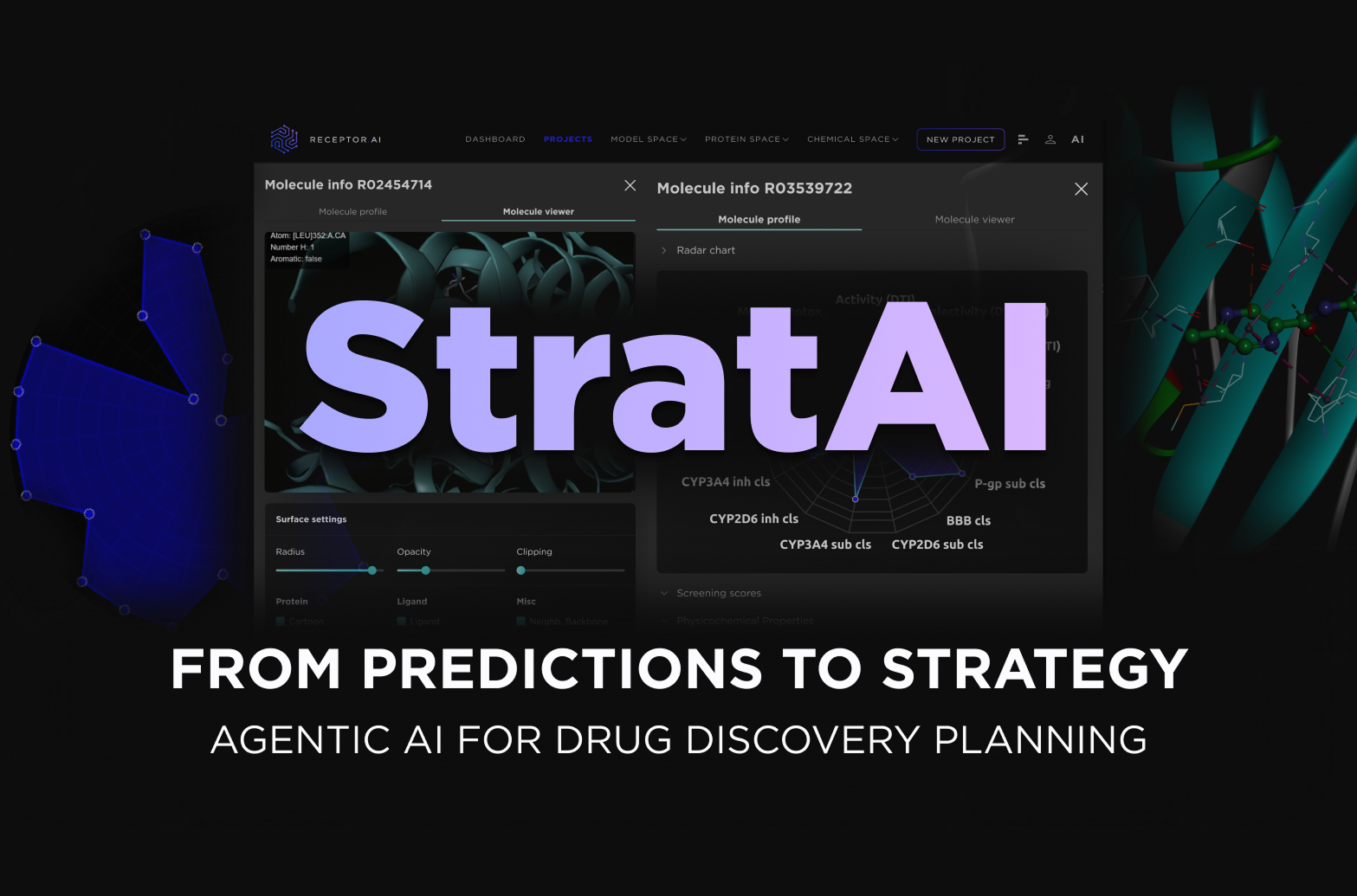Co-development Programs
We are currently engaged in 4 co-development projects progressing from hit discovery to preclinical stage. Addressing the industry’s most challenging targets we continuously refine our platforms, expanding their capabilities to deliver impactful new therapies.
validation
Pipeline details
RAI-003 (GPCR)
RAI-003 is an orally administered peptide candidate designed to selectively modulate a GPCR involved in vascular tone and tissue remodeling, targeting ischemic heart disease and chronic wound healing. By interacting at an allosteric site, it aims to reduce the off-target toxicity often associated with small molecules.
In preclinical models, RAI-003 improved cardiac function and accelerated wound closure, with no major safety signals observed to date. The program shows promise in the model studies, further, we are assessing pharmacokinetics and tolerability to proceed to the later development stages.
RAI-004 (Kinase PPI)
RAI-004 is an orally available small molecule designed to stabilize a transient kinase complex that regulates cytokine gene expression, a highly promising but challenging for inflammatory and autoimmune diseases.
We reconstructed the complex and developed molecular glues that stabilize it in an active state, restoring controlled cytokine signaling without broad immunosuppression. The program is currently in the early discovery stage, focusing on pharmacokinetics and metabolic clearance of compound to ensure therapeutic efficacy.
RAI-002 (Kinase)
RAI-002 is an orally administered small molecule designed to selectively inhibit a non-conventional kinase isoform. Previous attempts to target this kinase have failed due to insufficient selectivity. This isoform has been linked to tumor metastasis and chronic inflammation, making it a critical target for therapeutic intervention.
We identified unique transient conformational states specific to the target isoform, enabling us to develop first-in-class lead compounds with promising selectivity. The program is currently in the lead optimization stage and undergoing the refinement of oral bioavailability.
RAI-001 (Ion Channel)
RAI-001 is an orally administered drug candidate designed to restore function to a mutated ion channel responsible for hereditary kidney diseases. The mutation disrupts ion transport, causing electrolyte imbalances, hypertension, and impaired renal function. RAI-001 aims to restore normal renal signaling addressing the root cause of the disease.
We elucidated post-translational modifications that influence the pore geometry which exhibits selective features. In preclinical models, RAI-001 successfully restored renal function and improved electrolyte balance, with no significant safety concerns observed. The program is now advancing toward proof-of-concept studies.




